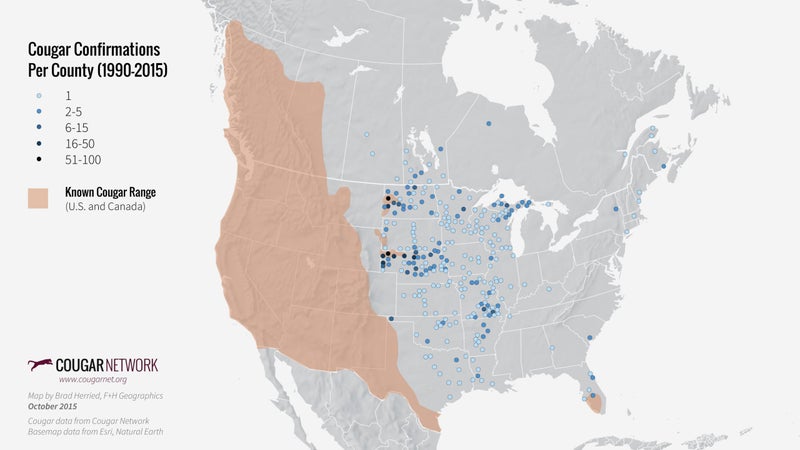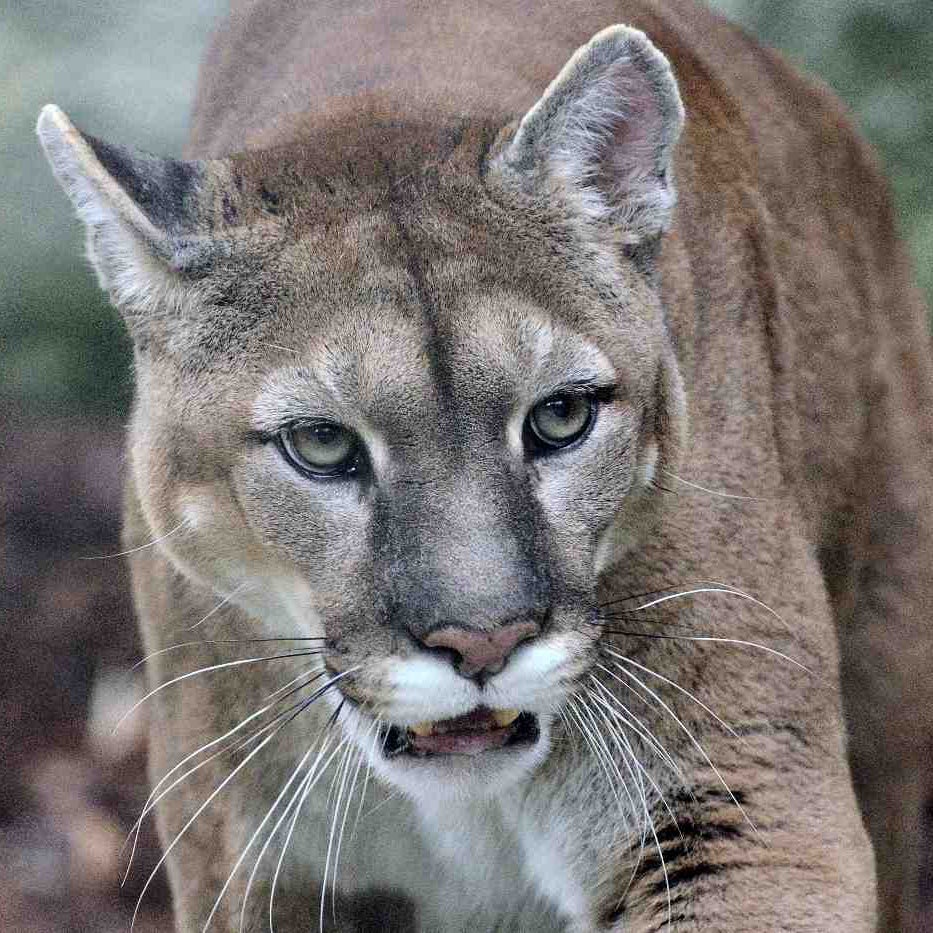News that the eastern cougar has gone extinct is today. That’s a bit misleading, as the subspecies was actually officially declared extinct in 2011, and it's probably been totally absent from the East Coast for at least 80 years.
Most stories also fail to mention that cougars are actually returning to the east.
On Tuesday, the U.S. Fish and Wildlife Service to remove the eastern cougar from the Endangered Species list. It's just the conclusion of a drawn-out process that left time for public comment and peer review. But hey, cool cat, humans destroying the planet—it’s a news story.
All this fails to catch a few interesting points:
- All North American cougars, pumas, catamounts, mountain lions, or whatever you want to call them, are actually the same species—Puma concolor. Eastern cougars had a little smaller heads than those of the ones we have out West, and they lived in the northeast. That’s it.
- There’s probably a handful of Puma concolor in the northeast right now. They’re just not of the eastern subspecies.
Let me explain. Since about 1990, researchers have been, which ends at the Rocky Mountains. It’s a promising start for the species re-establishing itself through parts of its once continent-wide habitat. Some of those new populations have grown large enough that they’ve begun to disperse young males very far afield. This range expansion is known as stepping-stone dispersion, and it’s thought that the Midwest will be home to a stable cougar population within the next 25 years as a result.

During this process of dispersal, young cougars wander very far in search of a new home and new mates. In 2011, a young male cougar was . Scientists determined that he’d begun his journey 1,500 miles away in South Dakota. Given how sneaky the animals are—sightings are rare even in places with relatively large population numbers—it’s likely that other cougars have made similar journeys.
Can a large predator like a cougar successfully live in the small pockets of forest remaining in the crowded northeast? Judging by my neighbor here in Hollywood——the answer is yes. He lives in a city park, where he hunts deer. Other cougars live in the nearby Santa Monica Mountains, San Gabriel Mountains, and even the Verdugos, right in the middle of one of the largest urban areas on the continent.
Should people be scared of cougars returning to the northeast? . By managing the overgrown deer population in the region, researchers believe that cougars could reduce the number of road accidents caused by the hoofed animals. Over the course of the next 30 years, that could add up to 155 human lives saved, as well as 21,400 fewer injuries, saving $2.3 billion. Similar to the way wolves have helped restore balance in Yellowstone National Park, cougars could help protect biodiversity in the northeast.
Removing the eastern cougar from the list of Endangered Species is an important step toward welcoming the species back to the northeast. Other subspecies of cougar would not benefit from the eastern cougar’s protections, and this clears the board for a discussion about what cougar protections could look like in the region in the future. Some have of the species.


